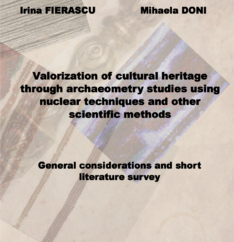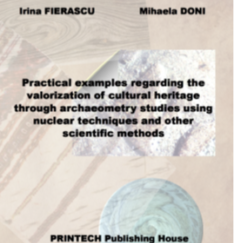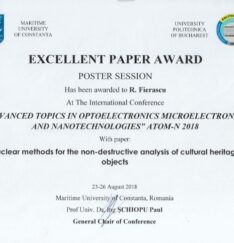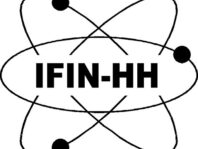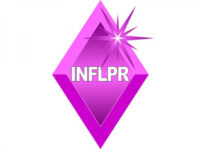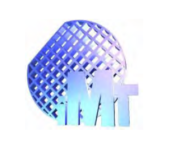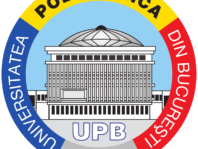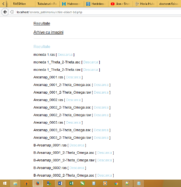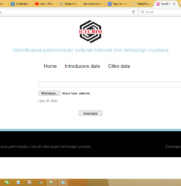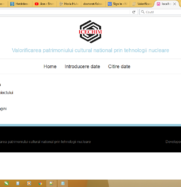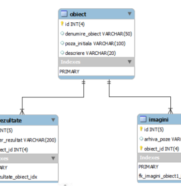Tehnici de stocare și valorificare a rezultatelor cercetărilor științifice avansate (SoVaReX)
Capitalization of the national cultural heritage through nuclear technologies
Contract 10PS/15.11.2017
The SoVaReX project responds to the need to promote the results of advanced research to raise their capitalization by the business community, local public administration and other potential end users.
Project funded under the Sectoral Plan of the Ministry of Research and Innovation
General objective
Development of an integrated information system for storing and capitalizing on the results of advanced scientific research in order to develop innovative economic and social development through the transfer of knowledge and technologies from large scientific infrastructures to the business environment and public administration.
Contracting authority: Ministry of Research and Innovation
Implementation period: 15/11/2017-08/12/2018
Budget for the partner ICECHIM: 400.000 lei
Project responsible: Dr. Chem. Radu Claudiu Fierăscu
Parteneri:
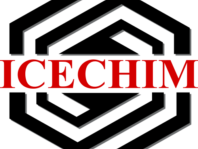
National Institute for Research & Development in Chemistry and Petrochemistry – ICECHIM
ICECHIM specific activities:
Capitalization of the national cultural heritage through nuclear technologies
The need to preserve, in particular preventively, cultural heritage stems from the inexorable perishable state of materials that are part of heritage, movable and immovable property. In recent decades, studies have identified five major areas of impact of heritage conservation on the economy: job creation, revitalization of city centers, preservation of tourist heritage, increasing the value of property, small business development.
The application of different analytical techniques for the study of excavated objects or pieces belonging to museum collections has been done since the nineteenth century, generally by applying classical analytical techniques to provide answers to historians’ questions.
The twentieth century provided powerful tools for the development of an independent field of science, archaeometry (application of scientific techniques to the analysis of archaeological materials). The most used techniques in archeometry are represented by nuclear techniques. From the beginning of archaeometry, ray fluorescence, X-ray diffraction and electron microscopy have been basic techniques for characterizing materials belonging to cultural heritage. With scientific progress, new nuclear techniques (such as PIXE / PIGE, NAA, etc.) have been successfully applied in the field of archeometry.
- Trans-disciplinary studies for the enhancement of the national cultural heritage through the use of nuclear technologies and complementary techniques (such as FTIR spectrometry, ICP-AES, thermal analysis, optical and atomic force microscopy, microbiological methods);
- Development of websites with relevant information for the project objective – Development of a specific website;
- national R&D institutions with activities in the field of nuclear physics and cultural heritage protection;
- entities specialized in knowledge and technology transfer;
- persons interested in professional training in the field of using computer systems for research and management of studies related to nuclear physics and related fields (training courses, studies, textbooks, etc.);
- Ministry of Research and Innovation (access to MCI data and open databases for policy / strategy development, etc.);
- local and central public administration (dissemination, communication, association, data storage, access to own and open data);
- NGOs specialized in this field;
- media (dissemination, communication, access to open data).
Images of the database containing the results obtained
Methodologies:
- Methodology for characterizing metal artifacts using nuclear and associated techniques;
- Methodology for characterizing textile artifacts using nuclear and associated techniques;
- Methodology for characterizing wooden artifacts using nuclear techniques and associated techniques.
Dissemination:
The results were disseminated by publishing three papers in scientific journals, two books, a book chapter and by participating in eight scientific events.
